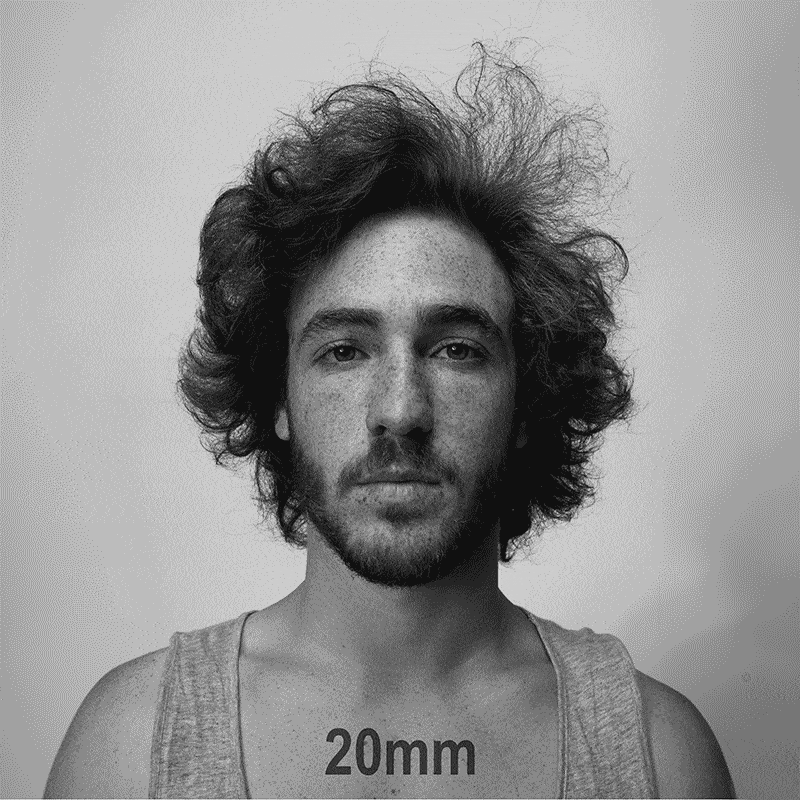From @[email protected] : https://sh.itjust.works/comment/13658165
Additional precisions from @[email protected]
It’s important to note that it’s the subject distance that’s the primary factor, not the focal length. The focal length is secondary in that it dictates how far you can be while maintaining the same framing. If you shoot the picture at 200 mm from the example and then without moving you shoot again at 20, you’ll have the same perspective, just way smaller subject in the frame; if you then crop in the picture shot at 20, you’ll have the same framing too, just way less pixels.
If you’re half a metre away from the dude’s nose, you’ll be roughly 60 cm away from his ears (20% more distance), but if you’re 5 metres away from his nose, you’ll be 5.10 m away from his ears (only 2% more distance) - and this is what creates the difference in apparent sizes of the facial features relating to one another.

Our brains or eyes automatically account for this, so a familiar face will look the same whether you’re right next to it or across the room. Given that, what focal length most closely approximates the composites our brains create? In other words, what does this guy actually look like?
In photography classes we were told 105 is the most commonly used for portraits, but that was 20+ years ago, dunno if "common wisdom" changed since...